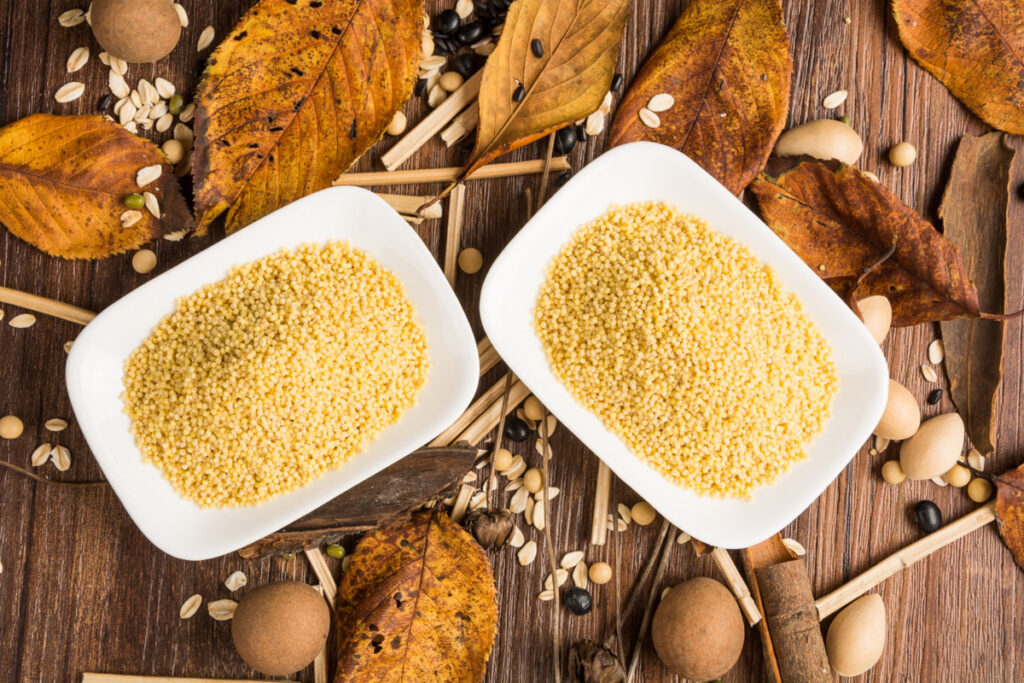Are grits bad for diabetics?
As a staple food in many households, especially in the Southern United States, grits are commonly eaten as a breakfast or side dish.
However, if you are living with diabetes, it’s important to consider how certain foods, including grits, affect your blood sugar levels.
In this article, we will dive into the nutritional profile of grits, their impact on blood sugar, and whether they should be included in a diabetic-friendly diet.
Are Grits Bad for Diabetics?
Grits are made from ground corn and are typically high in carbohydrates, particularly starch.
One serving of grits contains around 20 grams of carbohydrates, which can cause a rise in blood glucose levels.
For diabetics, controlling blood sugar levels is critical to managing the condition and preventing complications.
Foods that are high in simple carbohydrates and low in fiber can lead to blood sugar spikes.
The issue with grits lies primarily in their high glycemic index (GI), which measures how quickly foods raise blood glucose levels after consumption.
Grits have a relatively high glycemic index, meaning they can cause a rapid increase in blood sugar shortly after eating.
Thus, for diabetics, eating grits without considering portion control or combining them with other foods can lead to unfavorable blood sugar levels.
Grits and the Glycemic Index: What You Need to Know
The glycemic index (GI) is an important factor to consider when managing diabetes.
It measures how quickly a particular food raises blood sugar after being consumed.
Foods with a high GI cause a rapid increase in blood glucose levels, while those with a low GI result in a slower, more gradual rise.
Grits fall into the high-GI category, which means they can cause a spike in blood sugar soon after consumption.
A high GI diet is linked to an increased risk of insulin resistance and poor blood sugar control, both of which are critical concerns for people with diabetes.
Therefore, consuming foods like grits in large portions may lead to insulin spikes and make it more difficult for diabetics to maintain stable glucose levels.
How Grits Affect Blood Sugar and Insulin Sensitivity
When a person with diabetes consumes foods with a high glycemic index, their blood sugar levels can increase rapidly.
This prompts the pancreas to release insulin, a hormone that helps cells absorb glucose from the bloodstream.
However, over time, consistently high blood sugar levels can cause insulin resistance, a condition in which the body’s cells no longer respond well to insulin.
This makes it harder for the body to regulate blood sugar levels, leading to chronic high glucose levels and potential long-term complications.
Since grits are high in carbohydrates and have a high glycemic index, they may contribute to blood sugar spikes and make it harder for diabetics to maintain optimal insulin sensitivity.
Healthier Alternatives to Grits for Diabetics
Fortunately, there are several healthier alternatives to grits that are better suited for diabetics looking to maintain stable blood sugar levels.
Quinoa is a great option, as it is rich in protein and fiber, both of which help regulate blood sugar levels.
Oatmeal is another good choice, particularly when made with steel-cut oats, which have a lower glycemic index compared to instant grits.
Whole grains like brown rice, barley, and whole wheat bread also have a lower glycemic index than grits and are high in fiber, which helps slow the absorption of glucose.
These alternatives provide a more balanced approach to carbohydrate intake and are better for blood sugar control.
Tips for Incorporating Grits into a Diabetic-Friendly Diet
For diabetics who still want to enjoy grits in moderation, there are ways to reduce their impact on blood sugar levels.
First, it’s important to control portion sizes.
Instead of eating a large bowl of grits, try limiting the portion size to a small serving.
Additionally, pairing grits with foods that are rich in fiber, healthy fats, and protein can help balance the meal and reduce the blood sugar spike.
For example, adding a protein source like eggs, or incorporating healthy fats such as avocado or olive oil, can slow the absorption of carbohydrates and minimize blood sugar fluctuations.
It’s also advisable to avoid sugary or highly processed toppings, such as syrup or sugary fruits, as they can further contribute to blood sugar spikes.
What Should Diabetics Look for in Their Diet?
When managing diabetes, it’s essential to focus on a balanced diet that prioritizes whole foods, fiber, lean proteins, and healthy fats.
Controlling portion sizes, particularly with carbohydrate-rich foods like grits, is key.
Diabetics should aim for meals that help stabilize blood sugar levels throughout the day, avoiding foods that can lead to rapid spikes and crashes.
Incorporating low-glycemic foods, such as vegetables, whole grains, legumes, and fruits like berries, can help maintain better control over blood sugar levels.
It’s also important to stay hydrated and monitor blood sugar levels regularly to understand how different foods affect your body.
Natural Supplements for Supporting Blood Sugar Control
In addition to dietary changes, natural supplements can be beneficial for maintaining healthy blood sugar levels.
GlycoFortin is a supplement designed to help support glucose metabolism and improve insulin sensitivity.
It contains natural ingredients like Gymnema Sylvestre, Panax ginseng, and chromium, which have been traditionally used to regulate blood sugar and reduce cravings for sugary foods.
Taking GlycoFortin regularly may help diabetics manage blood sugar levels more effectively, especially when combined with a balanced diet and healthy lifestyle.
Managing diabetes effectively requires making informed food choices and incorporating natural support for blood sugar control.
If you love grits but want to improve your blood sugar management, consider adding GlycoFortin to your routine.
This natural supplement helps promote better glucose metabolism, allowing you to enjoy your meals with more confidence in managing your health.
To learn more about GlycoFortin and how it can support your diabetes management, visit the official GlycoFortin website.









